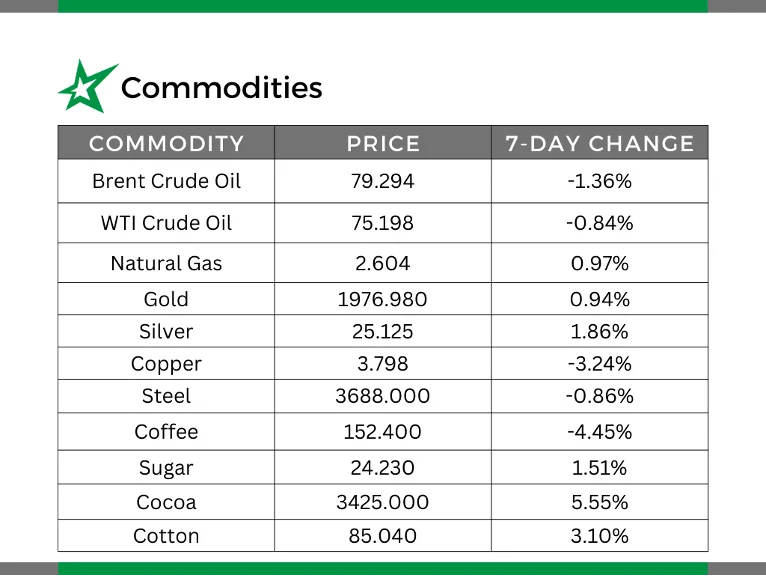Table of Contents:
-
Market Moving Headlines
-
Interest Rates
-
Currencies
-
Commodities
-
Concept of the Week: Risk versus Speculation
-
Quote of the Week
Market Moving Headlines
-
US housing starts fall more than expected, declining by 8% month-over-month.
-
Iron ore hovers close to a 3-month high.
-
Wheat futures in the US extended their rally to the $7 per bushel level in July.
-
Soybeans futures rise to a 3-month high.
-
The Eurozone inflation rate reaches a 17-month low.
-
South Africa inflation rate drops to a 19-month low.
-
UK inflation rate falls to a 15-month low.
-
Sterling weakens as inflation cools.
-
New Zealand inflation slows to 6% in Q2.
-
US natural gas futures rose more than 4% earlier this week driven by expectations of increased demand for air conditioning.
Interest Rates
Currencies
Commodities
Concept of the Week: The framework of a risk management program
A financial risk management framework serves as a structured approach to managing risk within an organization. While the exact components may vary depending on the organization’s specific needs, below are some common elements often found in a framework:
-
Risk Management Policy: This is a formal document that outlines the organization’s overall approach to risk management.
-
Risk Appetite Statement: The risk appetite statement defines the level of risk the organization is willing to accept in pursuit of its objectives.
-
Risk Governance Structure: This defines roles, responsibilities, and reporting lines for the individuals involved in risk management.
-
Risk Identification and Assessment: This includes processes for identifying both internal and external risks, determining their likelihood and potential impact, and classifying risks based on their severity or priority.
-
Risk Measurement and Quantification: This may involve using various financial models, statistical techniques, and scenario analysis to quantify risks and estimate potential losses.
-
Risk Management Strategies: This may involve implementing controls, diversifying investments, hedging with derivatives, risk transfer through insurance and developing contingency plans.
-
Risk Monitoring and Reporting: This involves establishing risk metrics, setting thresholds to monitor, and regularly reporting risk-related information to stakeholders.
financial risk management framework should be tailored to the organization’s specific needs and risk profile. It should be regularly reviewed and updated to reflect changes in the organization’s risk landscape and business environment.
Quote of the Week
“In any moment of decision, the best thing you can do is the right thing, the next best thing is the wrong thing, and the worst thing you can do is nothing.” – Theodore Roosevelt
Want this article in PDF form? Check it out!
Author: John Trefethen, Director and Co-Founder
Mobile: 612-868-6013
Office: 952-746-6040
Email: jtrefethen@hedgestar.com
HedgeStar Media Contact:
Megan Roth, Marketing Manager
Office: 952-746-6056
Email: mroth@hedgestar.com
Check out our services:








